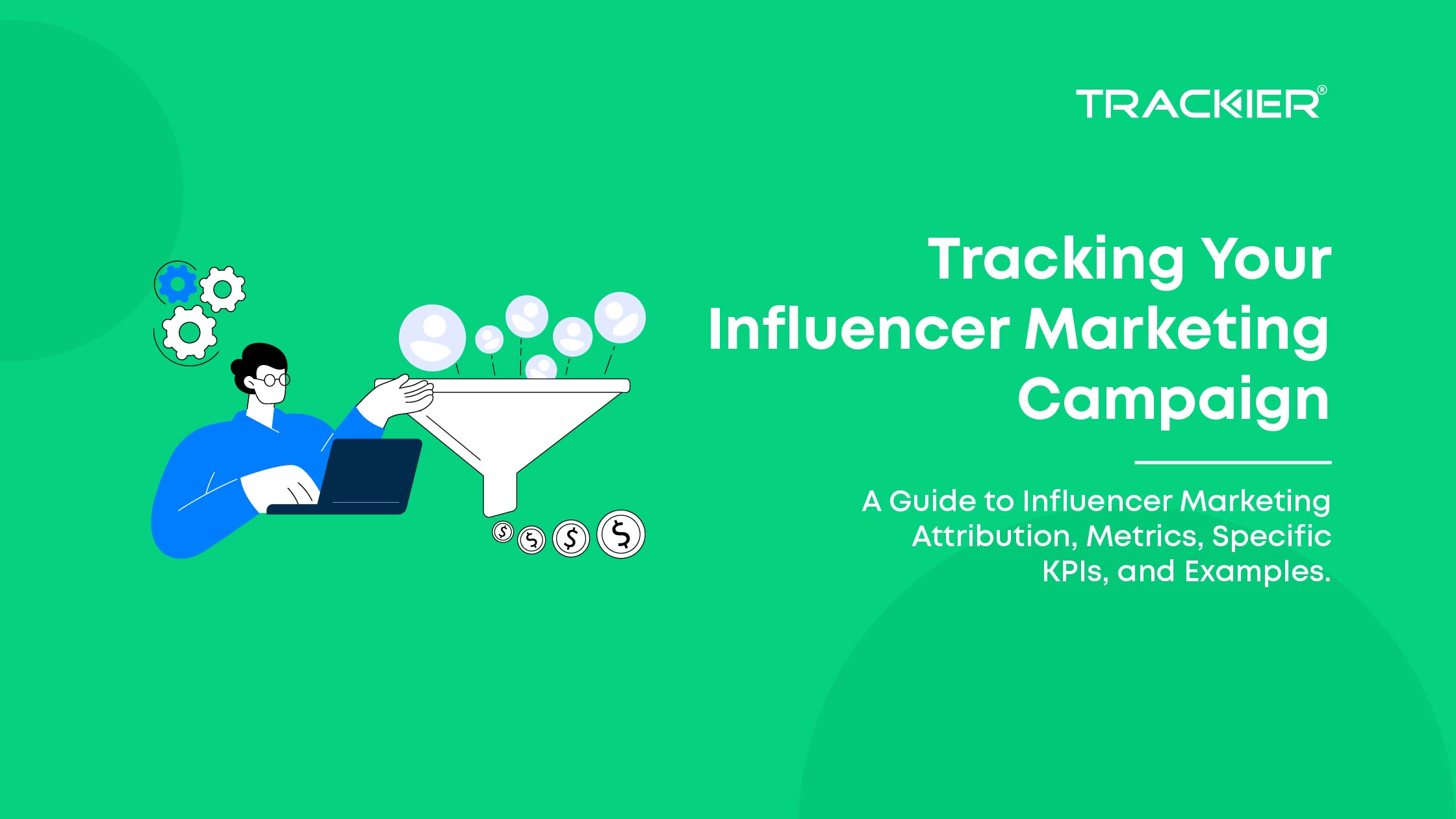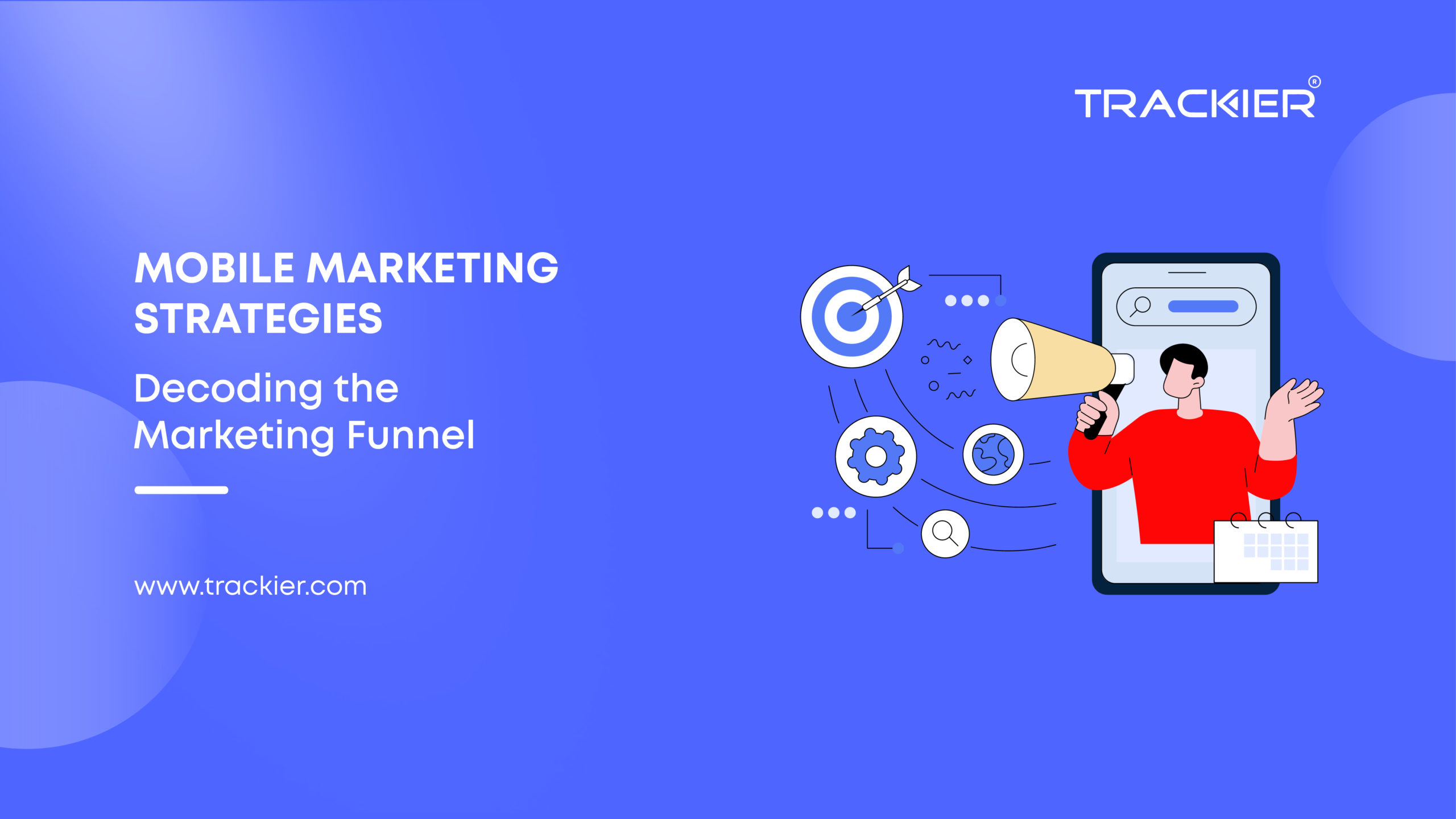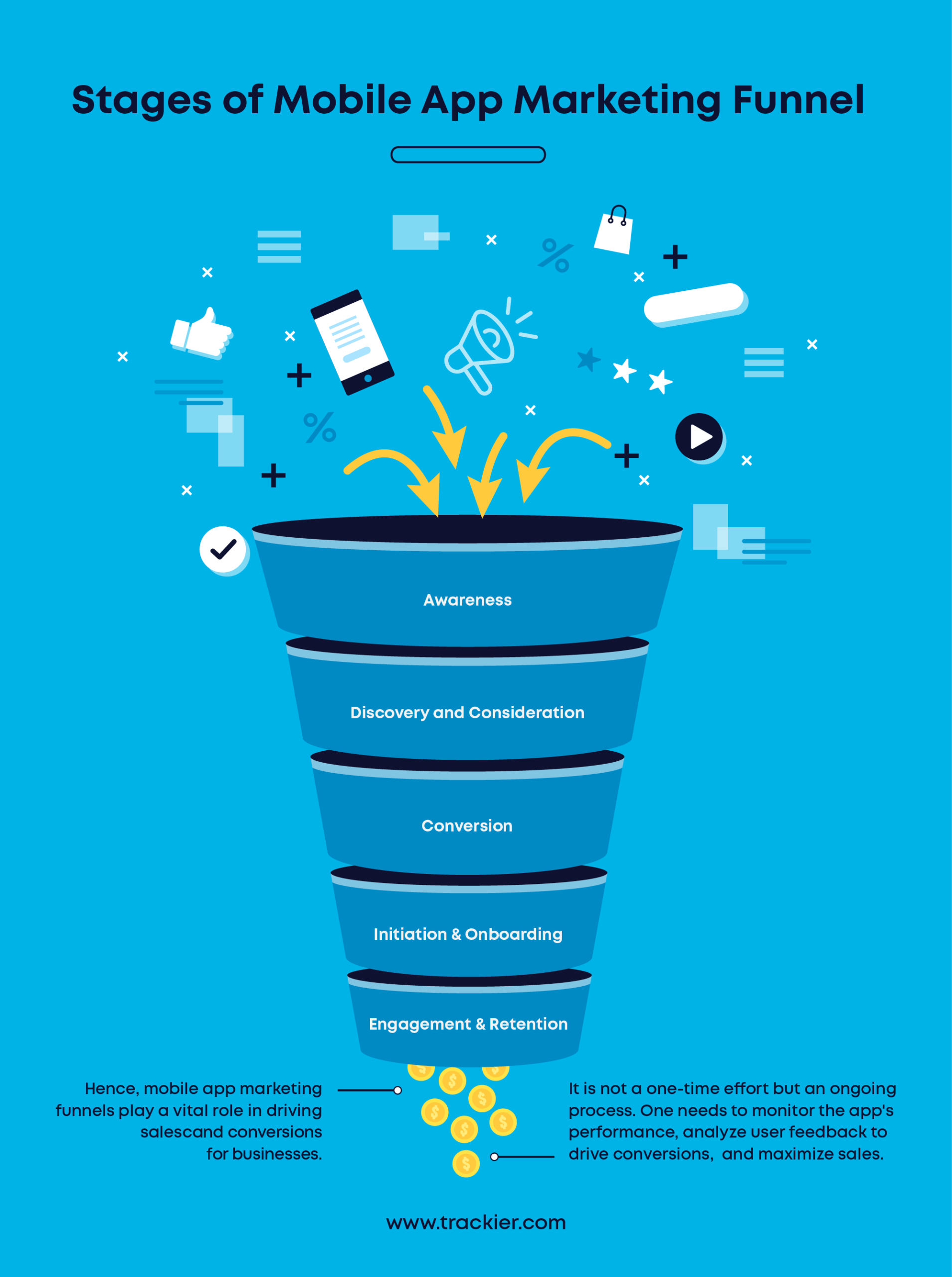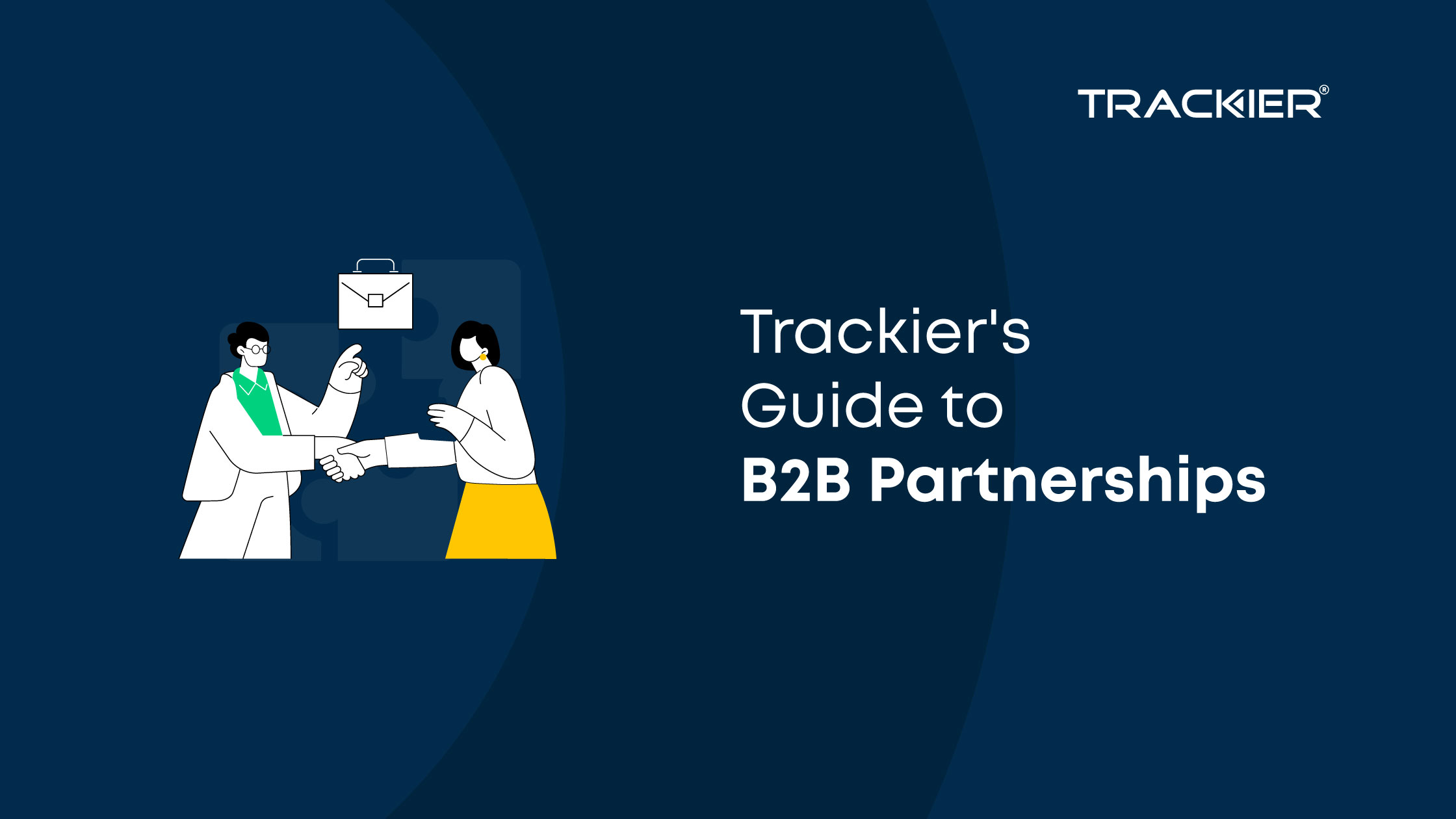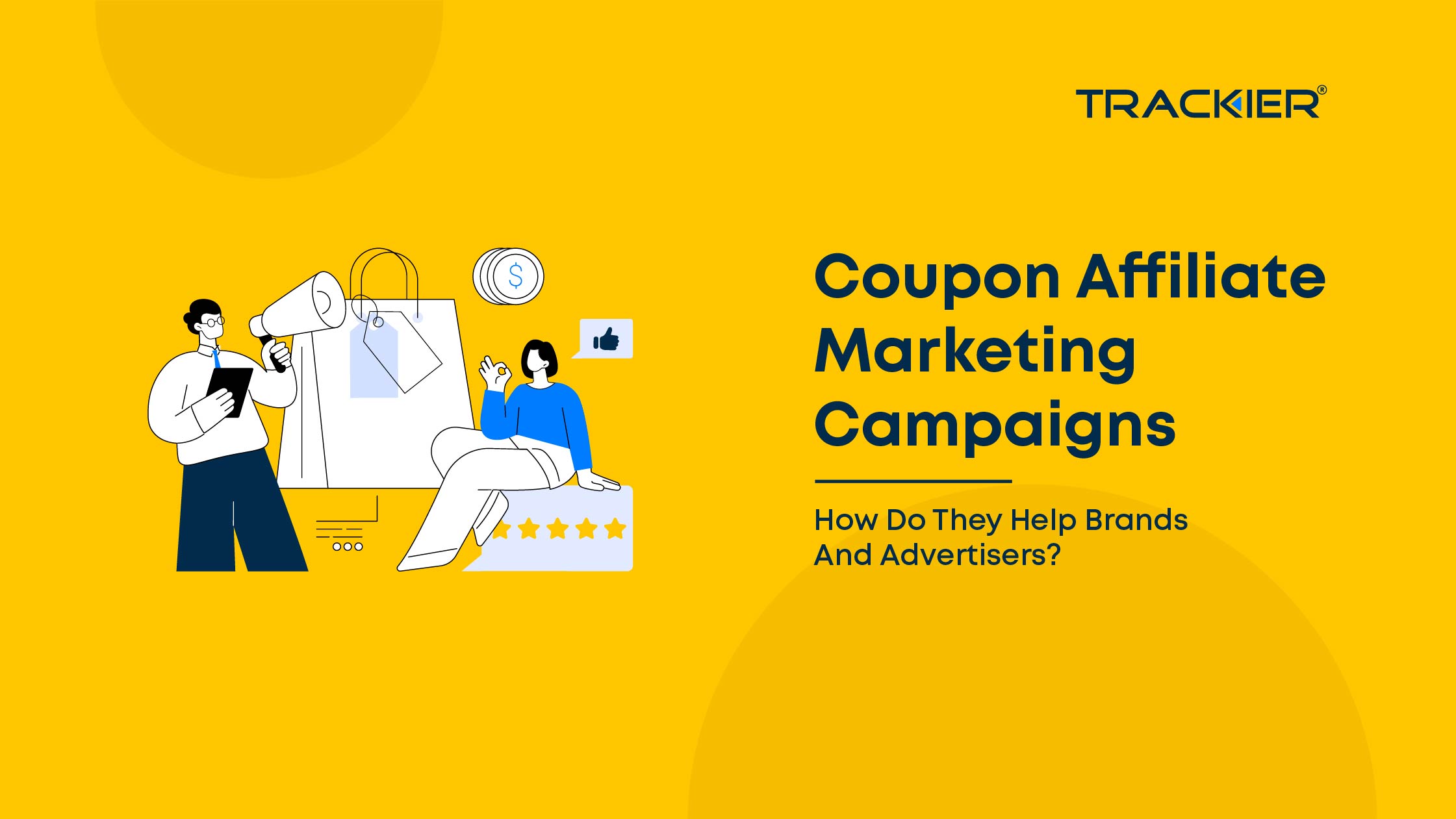Marketing has evolved a lot in recent years. The digital era has come with new advancements for every aspect of businesses. From awareness to the conversion stage, there are a lot more things to be taken care of for a successful establishment of a brand. Mobile app marketing has come up with new advertising strategies for brands that focus on every stage of marketing to reach their customers more effectively. Today users engage more with applications than with any website, mobile app marketing has changed the way users interact with businesses. This somewhere means that marketers need to have an efficient marketing funnel to match up the scaling advertising strategies. In this blog post, we’ll read about the various mobile app marketing funnel stages and the best practices on how marketers can make use of them at every stage of the funnel.
What is Mobile App Marketing Funnel?
The mobile app marketing funnel can be understood as the flow of the user journey from the beginning to the end. From the time user is aware of your app to the point of becoming a loyal user or customer. Marketers and app developers can easily understand the user journey and make required changes to the marketing funnel for better results. There are different stages involved in this entire user journey. Let’s explore the various stages of the marketing funnel further in the diagram below.
Stage 1: Awareness
Here’s when you take your first step toward marketing your brand. The initial phase of the funnel is where users are made aware of your brand, services, or products. This is completely a game of creativity and engagement how well you can connect with your target audience. The awareness stage involves some of the major activities that help marketers reach out more effectively to their customers. Let’s dig in!
- Identify your Target Audience: Before entering the market you should have a clear idea about your targeted audience. This will make your efforts more precise and effective. Understand the user journey, their requirements, and pain points, and then benefit them with your service. Implementing customer segmentation will lead to a focused and effective marketing strategy.
- Brand Building: You need to develop a strong brand identity for your app. Designing compelling logos, and visual assets that resonate with your target audience will increase app engagement.
- App Store Optimization (ASO): ASO is one of the key aspects when you want your app to show up on the App Store. Using relevant keywords, suitable icons and proper descriptions can help you optimize the App Store. This increase in the visibility of the app.
- Social Media: Use social media platforms to raise awareness about your mobile app. Sharing interactive content through your profile will increase engagement and also bring in a strong brand identity.
- Online Advertising: Increase your reach by using Google Ads, Facebook Ads, or Instagram Ads to reach your target audience. Setting up targeted campaigns that focus on demographics, interests, and behavior will result in better user attention.
- Implementing Referral Programs: Referral programs will invite existing users to refer your app to their friends and contacts. In return, you can encourage word-of-mouth referrals and user growth by giving incentives or discounts to both the referrer and the referred user.
Hence, the awareness stage helps you in establishing your brand identity and visibility to the users. The strategies discussed are how you can make your initial stage more impactful and attract potential users.
Stage 2: Discovery and Consideration
Certainly! After the users are aware of your app and services now the stages come of building trust towards your brand. In the consideration stage of the mobile app marketing funnel, the users look for the aspects of trusting your brand or not. They review your ratings, read feedback, and check the social media platforms for authenticity. Here brands need to focus on maintaining their positive identity by having a strong social media presence, an intrusive website, and positive feedback from their clients. However, the channels you should be most focused on include:
- App page: You should include the best feedback from your users on your app page. Through the App Store users can view the experiences that customers are having with you. Keeping it smooth and trustworthy will help you build a positive image.
- App ratings and reviews: Everyone checks for reviews and ratings before downloading any app. If you have positive reviews and higher ratings you would be considered in the top list and gain user attention.
Hence, keeping yourself on the consideration list can be competitive. But with the tactics above one can achieve them successfully.
Stage 3: Conversion & Onboarding Stage
Here comes the most difficult stage of the mobile app marketing funnel: the conversion stage. This stage decides the revenue of your business ultimately. Here your potential customers decide on making a purchase and take suitable actions.
- User-friendly Installation: Keeping the installation process as simple and user-friendly as possible will help your users intrigued by the app. Guide them on how to install the application and use it effectively.
- App Onboarding: Try to keep the onboarding process easy and interesting for all the users and guide them through the initial setup of your app.
- Personalization: Give your users the choice to change the app layouts, themes, color, etc according to them. This personalized experience will help users feel a sense of ownership and connection with the app.
Stage 4: Engagement & Retention
This stage of the funnel involves keeping your customers engaged with your brand through effective retention marketing strategies. Giving them a personalized feel and helping them with their queries will increase your customer loyalty. Here are some tactics to implement to engage and retain your customers.
- Incentives and Rewards: After the conversion process surprise your customers with rewards and offers. This can include exclusive content, discounts, or in-app currency as a gesture of appreciation for their engagement and conversion.
- Notifications: Using push notifications to remind users about the latest updates, new offers, and sales can help you retain your customers easily. Personalized recommendations will keep users engaged and encourage them to continue using your app.
- Customer Support: Ask your customers to share their experience with you. The more responsive your support the higher the trust of the customer. Timely and helpful assistance can help overcome any obstacles and build a positive user experience.
Conclusion
Hence, this mobile app marketing funnel stages have a great impact on the strategy of the brand. They help you understand the entire user journey and evaluate your performance. By analyzing every stage of this marketing app funnel businesses can enhance the user experience and raise the possibility of successful conversions, they may convert prospective customers into loyal, and engage users of your mobile app. Monitoring these marketing efforts is also one of the crucial aspects for marketers. Trackier MMP, helps you monitor your marketing efforts more precisely. From enhanced reporting analysis to the unified data for the campaigns can easily be accessed.
For more information contact us.


